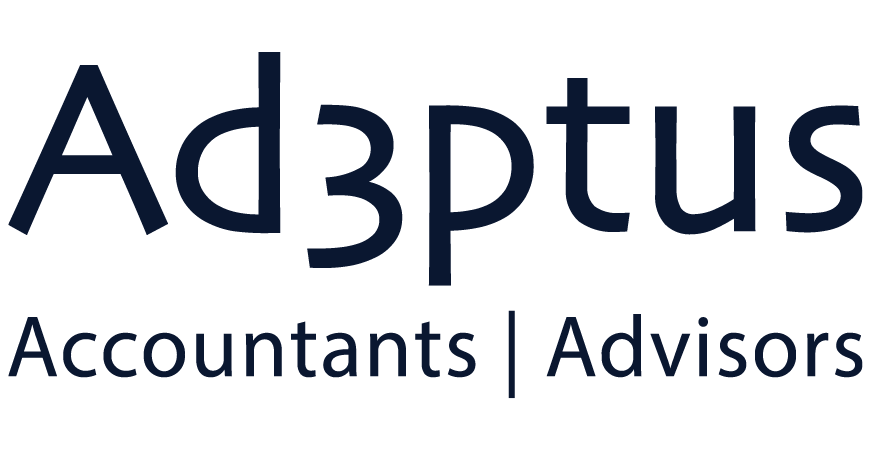December 15, 2021
5 Tax Planning Tips for the New Year
By Adeptus Staff
Start the new year off on the right foot by having your tax strategy in place
As the end of the year nears, your thoughts are probably shifting to the holidays, spending quality time with loved ones, and the outlook of a new year over the horizon. The last thing you want to focus your energy on is a possible income tax bill that may be sneaking around the corner.
But, December is a great time to begin considering your taxes because there are multiple things you can prepare before the end of the year to reduce your taxes and possibly hold more money in your pocket in the following year. Here are 5 moves you can perform prior to December 31st that might simply decrease your tax bill and make for a more simple tax filing season.
Maximize Your 401(k) Contributions
During the 2021 tax year (returns filed in 2022), the maximum addition to a 401(k) plan is $19,500 for people below age 50. Individuals ages 50 plus can make a “catch-up” supplement of an additional $6,500, for a sum of $26,000.
By making willing contributions to a 401(k), you’re decreasing your taxable income, so the longer you commit, the further you decrease your income tax bill.
Those laws also pertain to 403(b) plans, most 457 plans, and the government’s Thrift Savings Plan. If you need to alter your contributions, reach out to your company’s HR department and let them know you want to grow your contribution. If you haven’t previously maximized your contributions, one tactic for the year-end – if it won’t produce a financial misfortune for you – is to ask if you can transfer your whole closing paycheck into your 401(k).
Since 401(k) contributions are provided with pretax dollars, you won’t need to file any additional IRS forms. Your employer will publish your contributions in Box 12 (code D) of your W2. You are only taxed on the distributions once you commence taking withdrawals.
A bonus of optional contributions to a retirement plan is that you may pass for the Retirement Savings Contribution Credit, ordinarily coined the Saver’s Credit. The credits value is 10%, 20%, or 50% of your supplement, depending on your income, with a max credit value of $1,000 (or $2,000 if married filing jointly). The credit phases out entirely if your income is above the following sums in 2021:
- $65,000 if married filing jointly
- $48,750 if the head of household
- $32,500 for all other filing statuses
.
Max Out Your IRA Contributions
The greatest contribution to a Roth or Traditional IRA for 2021 is $6,000 for individuals below age 50. Individuals ages 50 and over can make a supplementary “catch-up” contribution of $1,000, for a max contribution of $7,000. If you can, provide as much as you can to your IRA before the tax deadline.
With a Conventional IRA, you may be qualified to receive a tax deduction for the year you contribute, but you will pay taxes on withdrawals in retirement. With a Roth IRA, you do not receive a tax break immediately, but withdrawals in retirement are tax-free.
Whether you commit to a Traditional or Roth IRA, you have till the filing deadline in April 2022 to produce deductions for the 2021 tax year.
Roth IRA Limitations
Regrettably, not everyone qualifies to give the max to a Roth IRA, and some big earners aren’t qualified to contribute at all. There are phase-out limits that depend on your filing status and income. For 2021, these ranges are:
- Single: $124,000 to $139,000
- Married Filing Jointly: $196,000 to $206,000
- Married Filing Separately: $0 to $10,000
This suggests that if you’re single and have a modified adjusted gross income (MAGI) of fewer than $124,000 in 2021, you can give the full $6,000 if you’re below 50 years of (or $7,000 if you’re 50 years of age or older). If your MAGI is higher than $124,000 but smaller than or equal to $139,000, your participation is limited. If your MAGI is higher than $139,000, you’re not qualified to contribute to a Roth IRA at all.
IRS Publication 590-A has worksheets for defining your MAGI and handling your decreased Roth IRA contribution limit.
Common IRA Limitations
If you make too much to give to a Roth IRA, you can subscribe to a Traditional IRA alternatively. But, if you’re additionally covered by a retirement plan at work, your participation may not be tax-deductible. The phase-out ranges suitable to Common IRA participation in 2021 are as such:
- Single | Filing: $65,000 – $75,000
- Married | Filing Jointly: $104,000 – $124,000
- Married | Filing Separately: $0 – $10,000
This indicates that if you are married, file a joint return with your spouse, possess a retirement plan at your place of work, and have a MAGI over $124,000, you may give to a Traditional IRA but can’t receive a deduction on your return. If your MAGI is within $104,000 & $124,000, your deduction is restricted. If your MAGI is $104,000 or under, you may claim the maximum deduction.
These conditions only apply if you – including your spouse, if you are married – and are not covered by retirement accounts at your place of employment. What follows contributions to a Traditional IRA when you don’t receive a tax deduction? They convert to “Basis” in your IRA.
What are Basis in a Traditional IRA
When you make nondeductible contributions into an IRA, the non-deductible share of your participation is deemed “Basis” in your account and handled as though you earned it with after-tax dollars. Plainly put, when you start withdrawing funds in retirement, the Basis share of your withdrawals is not taxable.
Where it gets complex is tracking your nondeductible participation. The IRS does not do it for you, and your IRA custodian does not as well – the financial institutions, trust company, or other entity that maintains your IRA. Tracing Basis on Form 8606 is solely your duty.
In any year you make a non-deductible contribution, you need to complete Form 8606 to notify the Basis part of your IRA. In the following years, you should proceed with filing Form 8606 to maintain a record of your Basis, even if you do not execute nondeductible contributions annually. If you stay with the related tax preparer or employ the same online tax preparation service year-after-year, the form should roll over automatically. But, if you modify tax preparers or software, double-check to make ensure your Basis carries over.
If you don’t keep a record of your Basis, all of your distributions in retirement will be taxable, and you will end up paying taxes double on that money. Being taxed once is already bad, so make it a precedence to track your Basis.
Excess IRA Contributions
The participation amount of $6,000 (or $7,000 if you are age 50+) is the max you can offer to all IRAs (Traditional and Roth) in a fallen year. If you offer more than the max, the IRS will impose a 6% penalty on the participation and every earnings.
You’ll estimate this penalty on Form 5329. The fine applies for each year the excess participation remains in your account. To evade this penalty, withdraw the excess participation prior to you filing your return.
Cut Your Losses
Are you concerned about capital gains taxes on your investments? Check your holdings for investments that are not performing. When the cost of stocks and mutual funds in your holdings decreases under their Basis, you can trade them before the years’ end. The losses you produce may counteract the profits you realized from trading stocks that progressed in value.
Bear in mind that you need to apply tax-loss harvesting strategically. While there is no boundary to the number of capital gains you can balance using this system, if you have larger losses than profits, only $3,000 in losses ($1,500 if you’re married filing separately) can be used to balance additional income, such as wages and interest. Any losses beyond $3,000 can be carried forth and implemented in future years.
Usually, the + or – is defined as of the sale date, and not the settlement date, which may be many days following – and, if you sell on December 31st, may also be in the subsequent year.
To create qualified losses, you need to sell on or prior to December 31st, but, don’t sell recklessly. Set up an interview with your investment advisor before year’s end to review which investments are true flops and which are worth holding.
When you prepare your return, you will notify capital earnings and losses covering Form 8949 and Form 1040, Schedule D.
Donate To Charitable Institutions
If you donate to a qualified charitable institution, you can usually claim 100% of your donation as an itemized deduction on Schedule A. Just make certain your charitable contributions are in by December 31st as there is no grace period if you make them later year-end.
Plus, make sure to obtain receipts for any contributions as you will need to itemize everything on your return. The documentation conditions are:
- Contribution of Fewer Than $250: A canceled check, credit card statement, receipt, or bank statement to name a few.
- Contribution of $250 or Higher: A contemporaneous penned declaration from the charitable institution.
- A Donation of $75 or Higher, Plus You Collected Something in Exchange (Tickets to a Charity Event for Example): A penned receipt or confirmation; you can just deduct the difference between what you provided and what you received
- Noncash Contributions Above $5,000: An evaluation prepared by an official appraiser.
- Contribution of a Vehicle: See IRS Publication 4303
Bear in mind that your participation must be presented to a qualifying institution to be qualified for a deduction. So, while helping out a family in need over the holidays is an incredible thing, your philanthropy won’t produce a tax deduction. But, if you opt to give to your congregation – assuming your congregation is a non-profit– or provide goods to the Salvation Army, those contributions are tax-deductible. If you have any inquiries about whether a particular institution qualifies, the IRS keeps a database of tax-exempt organizations. It’s a helpful tool if you don’t have a charity of choice.
Furthermore, bear in mind that you’ll want to itemize deductions to gain the advantage of the deduction for charitable contributions. If your entire itemized deductions are not higher than the conventional deduction of $12,400 for people ($24,800 for married people filing joint returns), then you will not receive any tax savings from your contribution.
You will do charitable donations on Schedule A. If you get noncash donations larger than $500, you will also want to complete Form 8283. Beginning with 2021 tax returns, you can subtract up to $300 in cash contributions, even if you do not itemize. This shift came about as part of the CARES Act. The $300 end applies despite your filing status, and it applies solely to cash contributions – non-cash contributions don’t count.
Collect Your Tax Documents Now
Businesses and other entities are required to send copies of 1099s plus W-2s to recipients by January 31st, so you won’t need to have them by the end of the year, but that doesn’t imply you can’t start preparing. When you have time, begin collecting your previous year’s tax payments and any documentation you have for tax credits and deductions. If you’re uncertain about what you may need, there’s no time like the present for a little due diligence.
If you begin collecting your tax-related records now, you (or your CPA or tax professional) will have a more streamlined experience preparing your returns in February, March, or April when the deadline is approaching. Also, the quicker you complete your return, the further relaxed you’ll be. If you get organized and set up a system, you may start looking forward to preparing your return.
The Final Word
If you’re anxious and concerned about each tax filing period, possibly it’s because you’re not prepared. You’ve heard the adage that the only two guarantees in life are death and taxes. Since you know you must file your tax return every April, why not get a head start? Begin ahead, organize, and plan. Set yourself up for a successful stress-free tax day while others are scrambling to overcome the deadline.





